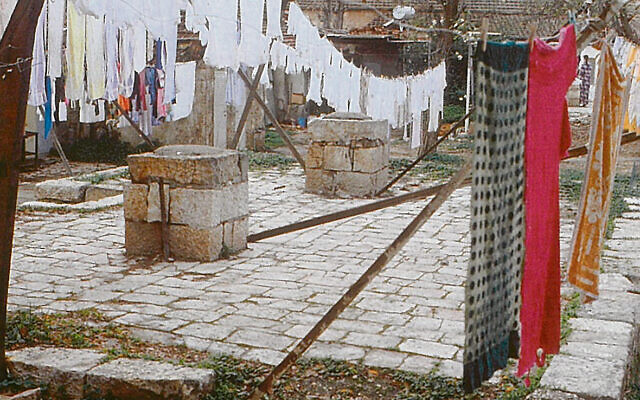Yerushalayim and Australian Jewry
In honour of Yom Yerushalayim today, Yossi Aron reflects on early Australian connections to our city.
Sivan 28 was the date in 1967 when, standing on Har Habayit, then IDF chief of staff Motta Gur pronounced the immortal words: “Har Habayit beyadenu”.
Regrettably some of the enthusiasm then engendered, and of course celebrated even here in Australia, would eventually be lost – particularly after Moshe Dayan shortsightedly handed control back to the Waqf, leading to the sad and sorry situation we have regarding Jewish “rights” on Har Habayit today. Nevertheless, in the contemporary era time spent in Yerushalayim by all who travel to Israel as we are now once again able to do, is generally a highlight of their trip; and of course so many of us have children who study or even live there.
However, the strong relationship between the Australian community and Yerushalayim dates back to a much earlier era.
In 1854, at the height of the Gold Rush, Australian Jewry raised an almost unbelievable 8000 pounds towards a fund organised by Moses Montefiore for various works in the land he loved. Perhaps the most famous of those projects was Yemin Moshe, an area of row housing with its famous windmill, overlooking the Old City. Many gentiles also contributed at the urging of church leaders.
The success of that appeal attracted others. In 1861 Rabbi Yaakov Sapir, famous for his book Even Sapir, describing the situation of far-flung communities he visited worldwide, arrived to collect for the poor of the Ashkenazi community of Yerushalayim. Almost simultaneously another visitor was Rabbi Chaim Zvi Schneersohn, whose mission was fundraising for building houses near Mount Zion. Though Rabbi Sapir’s mission had limited success, Rabbi Schneersohn succeeded in raising sufficient funds for the building of eight two-storey buildings (known as “Batei Machse – Houses of Shelter”) still extant at the edge of the Old City. After the Six-Day War these buildings, originally intended for and used by the poor of the city, became part of the premises of Yeshivat Hakotel.
However, the Montefiore Appeal aside, other Australian activity extended beyond the walls of the Old City as well.
In response to the overcrowded and unsanitary conditions in the Old City, and the influx of new immigrants in the late 19th century, some 40 new neighbourhoods were built outside the Old City walls prior to 1900. “Knesset Yisrael” was one of those “kolel neighbourhoods”. It was built on behalf of immigrants, supported by charity funds collected through the “kolel” system, whereby Diaspora communities supported their countrymen who had moved to Jerusalem, seen as their representatives in the holy city. In 1888 the Va’ad Hak’lali – Central Committee – which oversaw funds distribution, decided to purchase land and construct housing for its needy members. Their chosen location for Knesset Yisrael was land south of today’s Mahane Yehuda market. That area is now part of what is now known as Nachlaot, a neighbourhood that has become popular (and, ironically, expensive) given its semi-detached housing with garden plots in a central city location.
Melbourne’s greatest Jewish philanthropist from the 1870s until his death in 1914 was Joseph Kronheimer. The actual land on which the quarter was built was acquired with money donated by Kronheimer when Rabbi Joseph Rivlin (of the same family as Israel’s former President) visited Melbourne in 1890 on behalf of the Va’ad Hak’lali. Additionally, he funded 12 row houses that still bear a stone sign acknowledging his contribution, which was one of the most significant on an international scale. Of course Kronheimer had a history of making significant philanthropic donations to practically every Jewish organisation in Victoria, and also to others beyond the Jewish community, including building a wing for the Austin Hospital. Apparently Rabbi Rivlin had gained his interest in Yerushalayim by pointing out to him that the gematria (number value of the Hebrew letters) of his name “Yosef Kronheimer” equalled that of “Eretz Yisrael”.
But Kronheimer was by no means the sole Melbourne-based donor to causes in the Holy Land during the pre-World War I era. The Reverends Elias Blaubaum (St Kilda Hebrew Congregation) and Jacob Lenzer (East Melbourne) made annual collections for charitable purposes in Yerushalayim. In his collection activity Reverend Blaubaum was assisted by Woolf Davis, whose other claims to fame in Melbourne included founding the Woolf Davis Chevra in Carlton, later known as Stone’s shule, and arranging for a mikvah to be built in the Melbourne City Baths. On the north side of the main Knesset Israel courtyard stands the Beis Rachel Synagogue donated by Woolf Davis in memory of his wife, Rachel. To accord with the principle that a shule should be higher than places of residence, the synagogue is about 0.5 metres higher than the adjoining row houses that he also erected as well as two “alms houses” to be used for needy tenants. In 1879 Samuel Baruch Saunders, formerly of Adelaide and Melbourne, moved to Yerushalayim where he established a moshav zekeinim (an old age facility) and soup kitchen
Indeed, as we celebrate our return to Yerushalayim, let us remember that we are simply heirs to previous generations – whose members (Saunders notably excepted) were generally unable to physically reach the city, but indeed had it within their hearts.
The AJN’s religious affairs editor Yossi Aron OAM, has just returned from Yerushalayim


comments